On a Monday evening in mid-May, the Center for Identity, Inclusion and Social Change – commonly referred to as The Center – was having its usual end-of-year celebration. On the first floor of DePaul University’s Student Center, The Center’s transparent glass doors stood open to the public and the minority students who need them. This year, the celebration wasn’t very festive. Students and staff sat telling stories about their time in The Center, and their favorite things about each other. Most people were crying, and the energy was different, says Charia McDonald, previous student employee at The Center of four years. Their May celebration came the weekend after an ambiguous email from DePaul that instilled worry within The Center about its programs and the future of employment for both full-time and student employees.
On June 29, many of their worries were confirmed with a second email, signed by outgoing DePaul president Rev. Dennis H. Holtschneider. The Center for Identity, Inclusion and Social Change will close Aug. 15, nearly three months after the original May 11 email.
The Center’s focus on intersectional social justice programming and education has acted as a strong backbone on campus, providing resources for marginalized students for about 20 years since its inception in January 1996, according to The Center’s website. McDonald believes social justice education is critical. In her mind, “activism” is the image of picket signs and yelling in the streets. As someone suffering from anxiety, McDonald found a home for engaging in activism with The Center, where she could comfortably create dialogue around social issues.
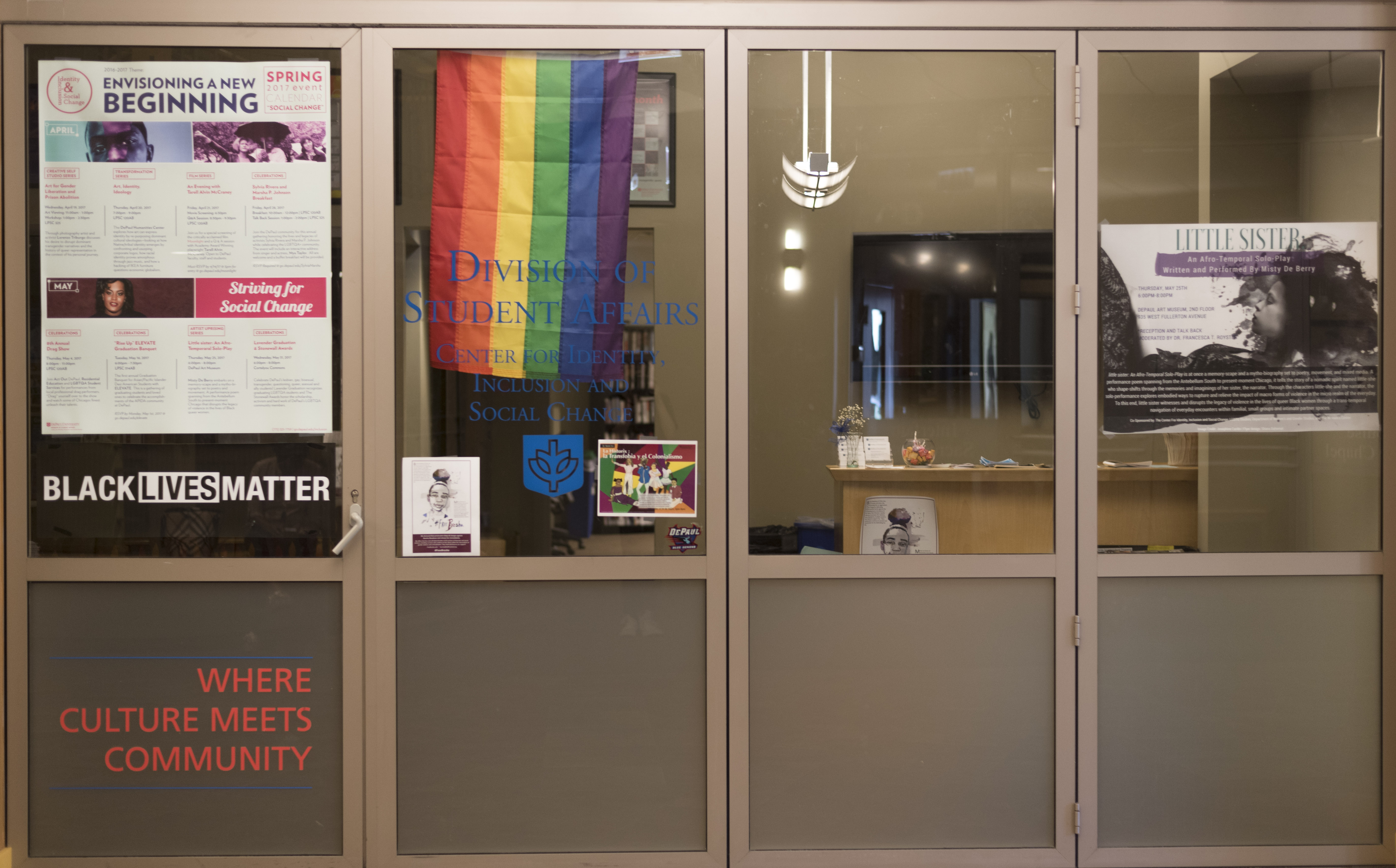
The Center of Identity, Inclusion and Social Change is located at DePaul University’s Student Center. Photo courtesy of Cody Corrall.
The elimination of The Center from campus life leaves six full-time staff members – a mixture of people of color and queer people – without jobs and just over a month to find new ones. Many students and Center staff say it also leaves DePaul without a space for an intersectional, social justice education. The Division of Student Affairs doesn’t plan to completely eradicate an intersectional space, but rather recreate it. However, the ambiguity surrounding both emails and the lack of any new information has created a rift between the administration and its students. Different groups on campus want different, mutually exclusive things, and finding a way to satisfy everyone may be an impossible task.
At first glance, the May 11 email had little to do with The Center. The university announced it would “immediately create a new center dedicated to serving African-American students.” This African-American Resource Center (AARC) was requested by DePaul’s Black Student Union (BSU) in January 2016 as a suggestion for easing the tensions in DePaul’s racial climate. The university also mentioned work on a Latinx Cultural Center and a LGBT Resource Center.
At the end of the first email, DePaul mentioned a potential new role for The Center. “We are very grateful for the work of the Center for Identity, Inclusion and Social Change,” the email read, adding that the school would “rethink its design and activity to accommodate these new structures.”
Despite the immediacy mentioned in the May 11 email signed by Rev. Holtschneider, the new AARC will not open until after fall quarter, according to Dr. Eugene Zdziarski, Vice President for Student Affairs. This leaves DePaul without an intersectional, minority resource center on campus for the coming fall term as campus life transitions between centers. The Division of Student Affairs, tasked with the project of creating the new centers, will continue to work on structural design and specifics over summer break. They plan to have components of the new centers in place by the beginning of fall quarter but will not be ready to officially open by Sept. 6 when classes start.
As the university enters an ambiguous period this fall in-between the old center and the new ones, students have raised the question – why close a beloved institution upon announcement of a new fold of identity centers while the design process is still underway? According to Zdziarski, the decision to close The Center and create new resource centers came from Rev. Holtschneider himself, who has been under pressure from strained race relations on campus due to past events surrounding speaker Milo Yiannopoulos and an ever-present legacy from the race protests at the University of Missouri – Columbia in 2015, which prompted the initial List of Concerns from DePaul’s BSU.
The Center administered multiple intersectional programming events throughout the academic calendar to focus on “historically marginalized and silenced narratives and identities,” such as the Emergent Speakers Series, Creative Self-Studio Series and the Artist Uprising Series. Creative Self-Studios specifically offered “a workshop experience for students to actively engage in self-exploration and authorship of their multifaceted identities,” and have included speakers such as Aisha Fukushima, an African American Japanese woman who uses hip-hop and slam poetry to challenge expression. Students walk away having channeled their activist work in a peaceful manner and worked together in a diverse group. With these workshops come a greater understanding of the ways in which their varied identities relate not just to themselves, but in larger social constructs throughout the city, according to the workshop descriptions.
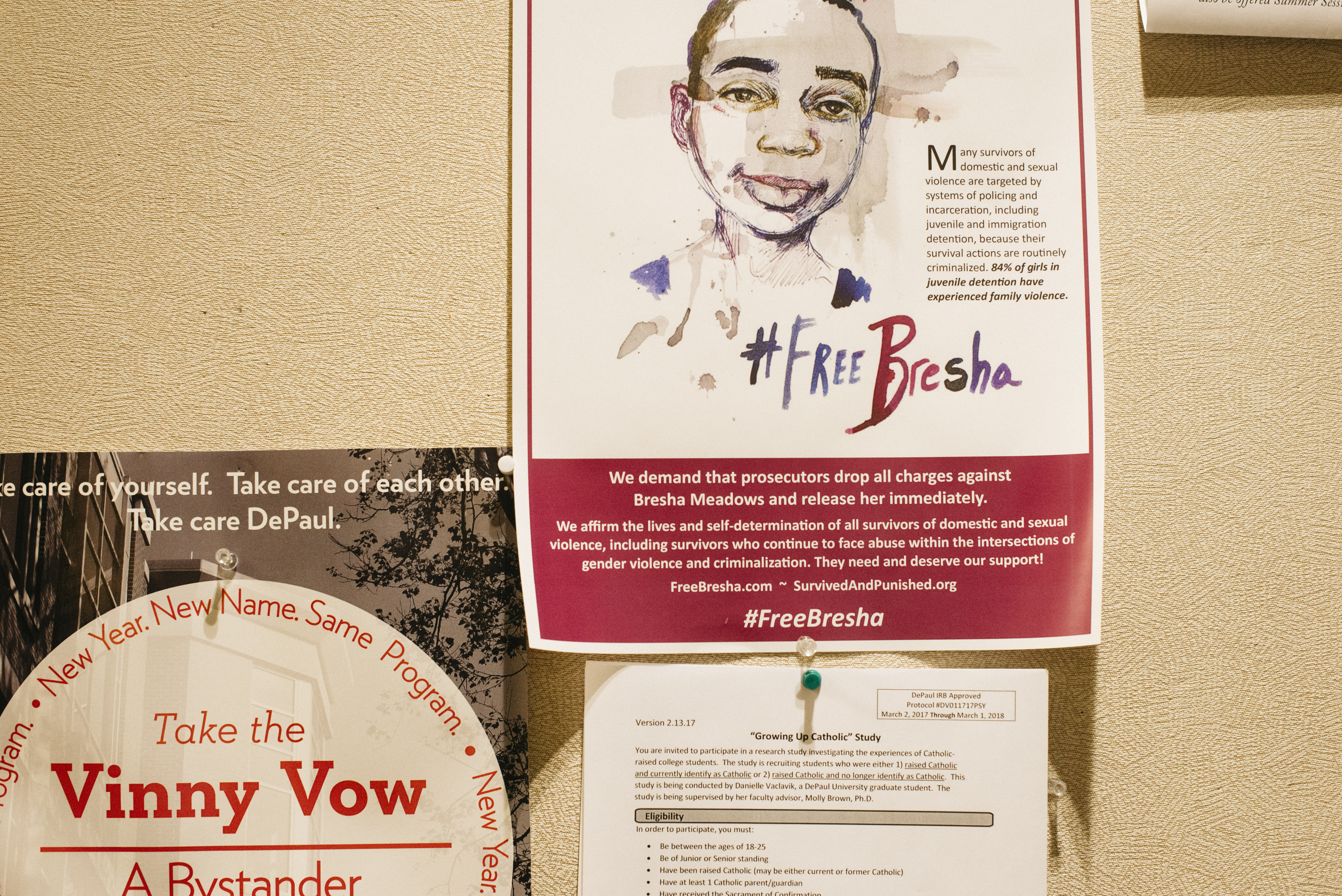
The Center for Identity, Inclusion and Social change offered a wide array of workshops for students and faculty. Photo courtesy of Annie Zidek.
For nearly two months between May 11 and June 29, the status of The Center and jobs within were left unaddressed by DePaul. All media inquiries were forwarded to the school’s Office of Public Relations and Communications, which said on May 30 that “the Office of Student Affairs is in the process of forming a working group on this, but there is not much new information to share at this time.” Student Affairs could not be reached for comment between May 28 and July 24.
An interview request was sent via email to Zdziarski three times: on May 28, June 22 and July 13. The first two requests were forwarded to Carol Hughes in the Office of Public Relations and Communications, who responded both times with quotes from the May 11 and June 29 emails, respectively, as the university’s official communication on the new centers. After the July 13 request, an interview with Zdziarski was set up by Judy Melgarejo.
The section of the June 29 email announcing the closure of The Center comes at the very end (nearly 800 words in) of a 1,036-word email titled “Student Affairs Restructure.” Rev. Holtschneider wrote that “Current staff will have the opportunity to apply for positions in the three cultural resources centers, as well as receive priority consideration for any other open positions within the Student Affairs divisions or within other university departments for which they are qualified.” The staff was notified that The Center is closing and will have just over a month to search for a new job. Staff members who do not secure new positions by Aug. 15 will receive severance pay, subsidized benefits and access to outplacement services, according to the June 29 email.
“I think when a decision was made, we were still trying to figure things out as well,” Rico Tyler said, Associate Vice President for Student Affairs. “Structure changed, a charge changed, how we were to do business changed. So there wasn’t a ton of information that we could provide at that moment. We talked about possible direction, this is what we’re hearing, but there weren’t a ton of specifics.”
Student Affairs has begun the screening process for new staff positions in the upcoming centers and have started scheduling Skype interviews. They are hoping to have candidates on campus within the coming weeks and plan to make job offers soon after. While they cannot be certain that staff will be hired and working by Sept. 6, Student Affairs is moving forward with that intention, according to Tyler.
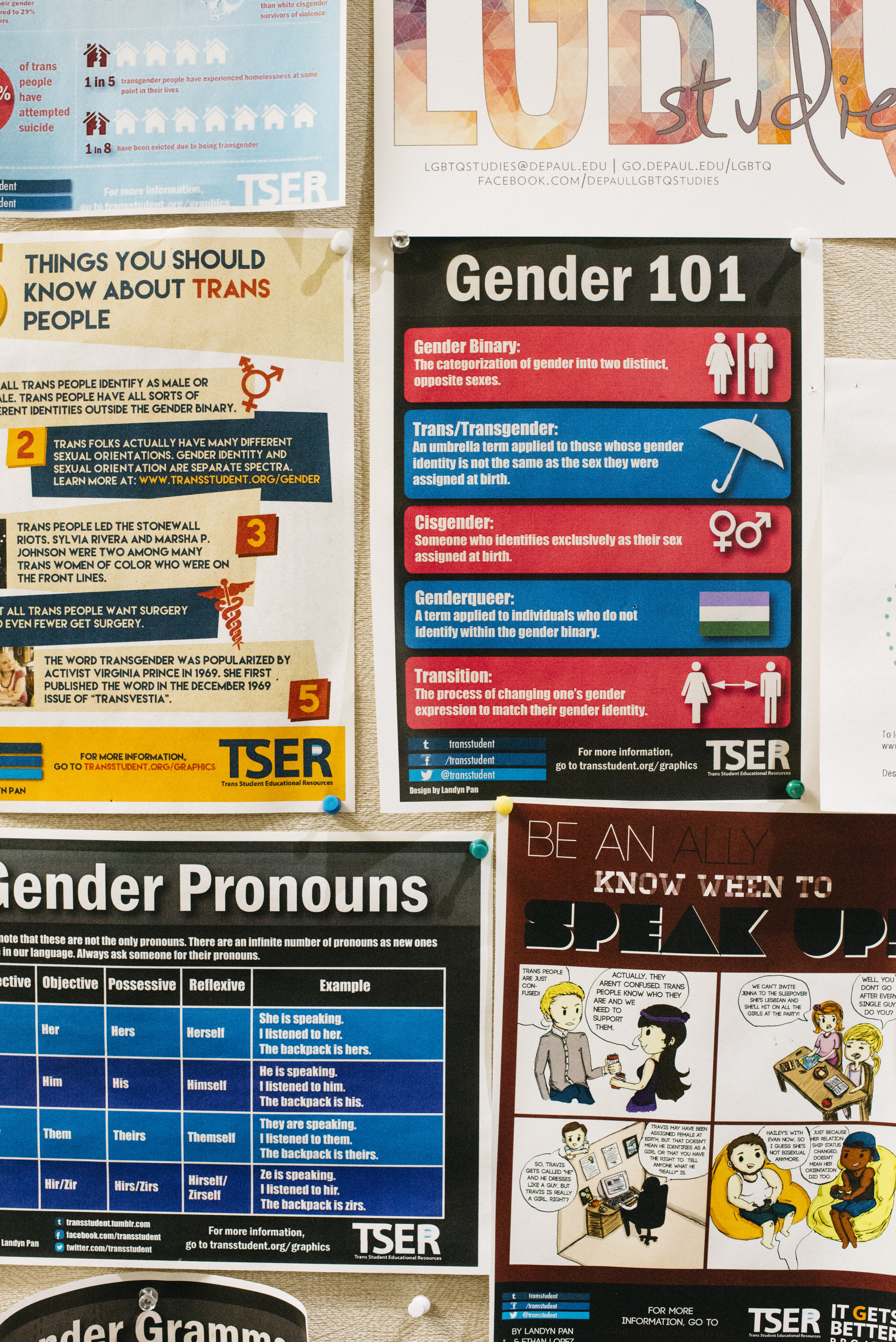
The Center provides resources for social justice education. Photo courtesy of Annie Zidek.
If the new job positions are determined by this fall and any previous Center staff are hired in one of these new positions, they will not have a job with the university between Aug. 15 when The Center closes and Sept. 6 when classes resume – assuming the new positions would begin by then. According to Tyler, jobs from The Center are not being shifted or guaranteed because the new structure requires new positions with different responsibilities.
Student Affairs also plans to have a physical space established for the new centers by the time fall quarter begins. Zdziarski and Tyler hope to maintain intersectionality among the offices by hosting them in the same general space, hoping to keep them in communication with one another. By creating the same general space and having each identity center work together toward common programming, Student Affairs plans to make sure the identity centers won’t exist separately, but rather work together while still preserving their own space.
While some students worry these new centers will undercut intersectional programming, Zdziarski says Rev. Holtschneider made the decision to make separate identity spaces in order to address developing student needs and advance DePaul’s resources for minority students. However, The Center’s old staff say the new centers are a regression – not a progression.
An employee who has worked within The Center said staff were not made aware of the then-potential change until an hour before the university-wide email was sent in May.
“We don’t know if we’re losing our jobs. They haven’t told us. We’re not part of the decision-making process,” the employee said before the June 29 announcement. “But if it comes down to people losing their jobs, having their jobs moved to different places or restructured… it would be, right now in The Center, all people of color and queer folks. So it really feels kinda gross.”
The employee, who wished to remain anonymous for job security, attended a town hall meeting on April 25 hosted by the Office of Institutional Diversity and Equity (OIDE). The office was researching potential models for DePaul’s own AARC and putting together a report. According to the employee, these previous meetings on the creation of the AARC made it seem as if there would be additional resources to create the new center, not a “deficit model” that would take resources away from the current Center. The employee could not be reached for comment via email after the June 29 announcement closing The Center.
“If you have to take away in order to create, something seems wrong,” the employee said. “That deficit model is what systems of oppression and power rely on to work. They always say there’s not enough. The truth is, there’s always been enough. You just have to be willing to do the work. I think DePaul can do that, if they really want to.”
A common worry among students, McDonald included, is that the new centers will be underfunded and understaffed. DePaul declined to provide new details on funding for about two months. On July 24, Zdziarski confirmed the total programming budget that used to belong to The Center will be spread out among the new resource centers, but will also be a greater programming budget than previously allotted for The Center.
Student Affairs says it hopes to operate each center on extended hours, from 9 a.m. until 11 p.m. In each of the three centers, there will be one full-time staff professional, a graduate assistant and a handful of student workers. Over all three centers, there will exist one associate director and one intersectional programming coordinator. According to the June 29 email, each of the three centers will provide specifically intersectional programming over the course of the year. Events such as the Martin Luther King breakfast celebration and the Dolores Huerta breakfast, previously put on by The Center, will now be led by OIDE and the Office of Mission and Ministry with the participation of the new centers, according to Zdziarski.
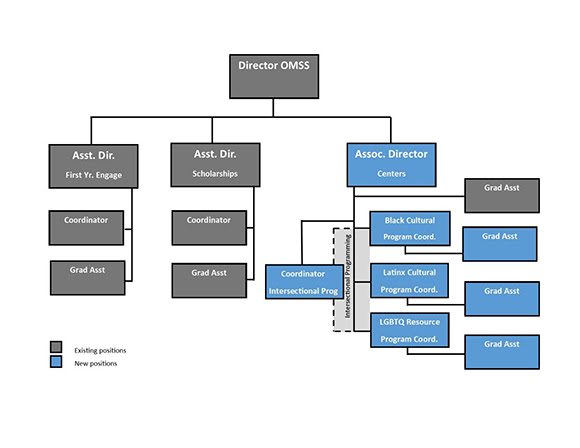
An organizational chart from a University-wide email sent on June 29 2017.
Student employee positions within The Center also went unaddressed for over a month. Charlie Pollard-Durodola, an incoming junior this fall, was hired for the SoJA student coordinator position for the 2017-2018 academic year. SoJAs, or social justice advocates, were a group of students working out of The Center whose job it was to conduct social justice education throughout campus. For this fall, 13 student SoJAs were hired and trained last spring quarter, according to Pollard-Durodola. SoJAs would facilitate dialogue within classrooms and clubs around allyship, solidarity, privilege and oppression.
The SoJA budget and payment came from The Center’s budget. After the June 29 email closing The Center, Pollard-Durodola did not hear from university administration on their employment status until Aug. 10, when SoJA staff were informed via email that the SoJA positions will be eliminated this coming fall.
“The SoJA position is really unique in its ability to both learn about yourself and learn about others, and be able to create conversations on this campus that we don’t get to have a lot of the time,” Pollard-Durodola said. “And a lot of the time, frankly, they don’t get paid. Social justice work is often something that’s on the side; you don’t have a chance to actually call it a job. Which is something very unique and interesting that the SoJA program really treasures, being able to give the emotional energy and labor to this work and also being able to get paid for it.”
Pollard-Durodola is concerned for their fellow SoJAs’ stability on campus this coming fall, as the SoJA position was paid. According to the June 29 email, social justice training and education was to be moved to the Office of Mission and Ministry. They are now being offered different positions in the Office of Multicultural Student Success, as either a Front Desk Assistant or a STARS Peer Mentor.
Last month, Zdziarski acknowledged that student worker roles may change without providing further details. “As it relates to student employment, we are working to ensure that all students that were previously offered positions have opportunities in the new structure,” he said on July 24. “Obviously, specific duties may change, but we want to honor the commitments previously made to students.”
According to Pollard-Durodola, the SoJAs who have been trained for this upcoming fall did not receive any communication on their employment before the Aug. 10 email, leaving the SoJAs with a little over a month of uncertainty and job searches and creating deeper disconnect between the university administration and its students.
“It’s really surprising the way in which a university that’s this big would do so little to accommodate their students,” Pollard-Durodola said on July 18. “It’s really shocking to not tell them anything about their job security.”
According to Pollard-Durodola, DePaul is showing a lack of understanding on topics such as identity and intersectionality by separating identities into multiple centers instead of holding them in one. They said that race conversation in the U.S. tends to exist on a binary platform of black and white, when there really exist many more races and identities that go along with that. Pollard-Durodola sees the separation of these identity spaces as supporting the binary, oppressive system that race currently exists within.
“There’s really no need to separate these identities and sort of pull apart people who physically can’t be pulled apart. It’s really detrimental to a lot of the folks who now have to choose which community is gonna be right for them,” Pollard-Durodola said. “For me as a black trans person, I don’t know if DePaul wants me to choose to go to the LGBT center or the black center. If anything this is a very regressive shift. The only reason social justice works is when we understand the intricacies of people’s identities, the way different identities inform one another.”
Pollard-Durodola says that a lot of the work these new centers seem to be tasked with is work that was already residing in The Center. By researching and granting a student suggestion from BSU, university administration has found themselves in a position with different, independent requests that cannot all be met evenly.
These new models are being created in a time of constrained resources. According to Zdziarski, administration did not have the budget to both provide new resource centers, as requested by BSU, and also keep The Center open with an increased programming budget. Student Affairs hopes to address student needs and social justice through the intersectional programming coordinator – they are working to create a structure that will both address developing student needs and hold onto the good things The Center was doing, Zdziarski says.
“The reality is they’ll have access to both of the spaces and find what’s comfortable for them,” Zdziarski said. “Plus the way we hope these centers will work is creating that space that is intersectional, where again we’re addressing the multiplicity of student needs within those various identities.”
After the potential role change of The Center was announced on May 11, BSU also made clear to administration their worries. Kendall Sprinkle, incoming DePaul senior and president of BSU as of last spring, feels it’s important to remain in contact with administration and continue to make her voice heard.
“From the very beginning we made it clear that we didn’t want to jeopardize anyone’s jobs,” Sprinkle said. “We didn’t want to get rid of any centers that exist already because The Center specifically has such a unique role on campus. They have amazing programming on LGBTQA rights, on intersectionality, on what inclusion really means and how to really be inclusive. So from the get-go we wanted to make sure that wasn’t at risk.”
After the May 11 email, Sprinkle was excited to move forward with the AARC plans, as the university had acknowledged their request and showed they were listening. However, she also expressed worry over the future of The Center and began to wonder if the university would continue to listen to BSU concerns. After the June 29 announcement closing The Center, Sprinkle says she has no comment.
As noted in the AARC Report provided by OIDE, the university says it has heard from students that they do not want the new center to take away from other offices and departments within the university. The report specifically recognizes this in the meeting notes from the AARC Student Feedback Meeting on May 12, one day after the university-wide email announced the immediate creation of an AARC at DePaul.
Zdziarski and Tyler hope that these new centers will not take away from what students loved about The Center, despite its closing.
Nearing the end of Rev. Holtschneider’s tenure, the decision ultimately came from a university president on his way out, under duress and demands from minority student groups and tight racial tensions on campus for the past two years. Moving forward, the competing visions of what resource plan is best for DePaul’s marginalized students will continue to play out.
A motto for The Center has been that “Out of protest, comes progress.” Before its public opening in January 1996, two student protests took root on campus, creating a rift between administration and students much like the university is seeing now.
The first student protest was a sit-in demonstration in the Office of Multicultural Student Affairs. Latinx students were concerned about employment decisions in the office, and eventually the university recognized the need to increase the number of faculty of color and support for the Centers for Latino and African-American Research. The second protest event lasted 10 days in April 1995 when members of Concerned Black Students staged a sit-in in the headquarters of the student newspaper, The DePaulia, in response to what they identified as “insensitive and inadequate coverage of minority issues.”
In the AARC report put out by OIDE, the research shows that the director of nearly every model presented strongly recommended including student voices and opinions in the design process. As Rev. Holtschneider stepped down and DePaul’s new president A. Gabriel Esteban began his tenure on July 1, students still have time to make their opinions heard with the new president before the centers take root.
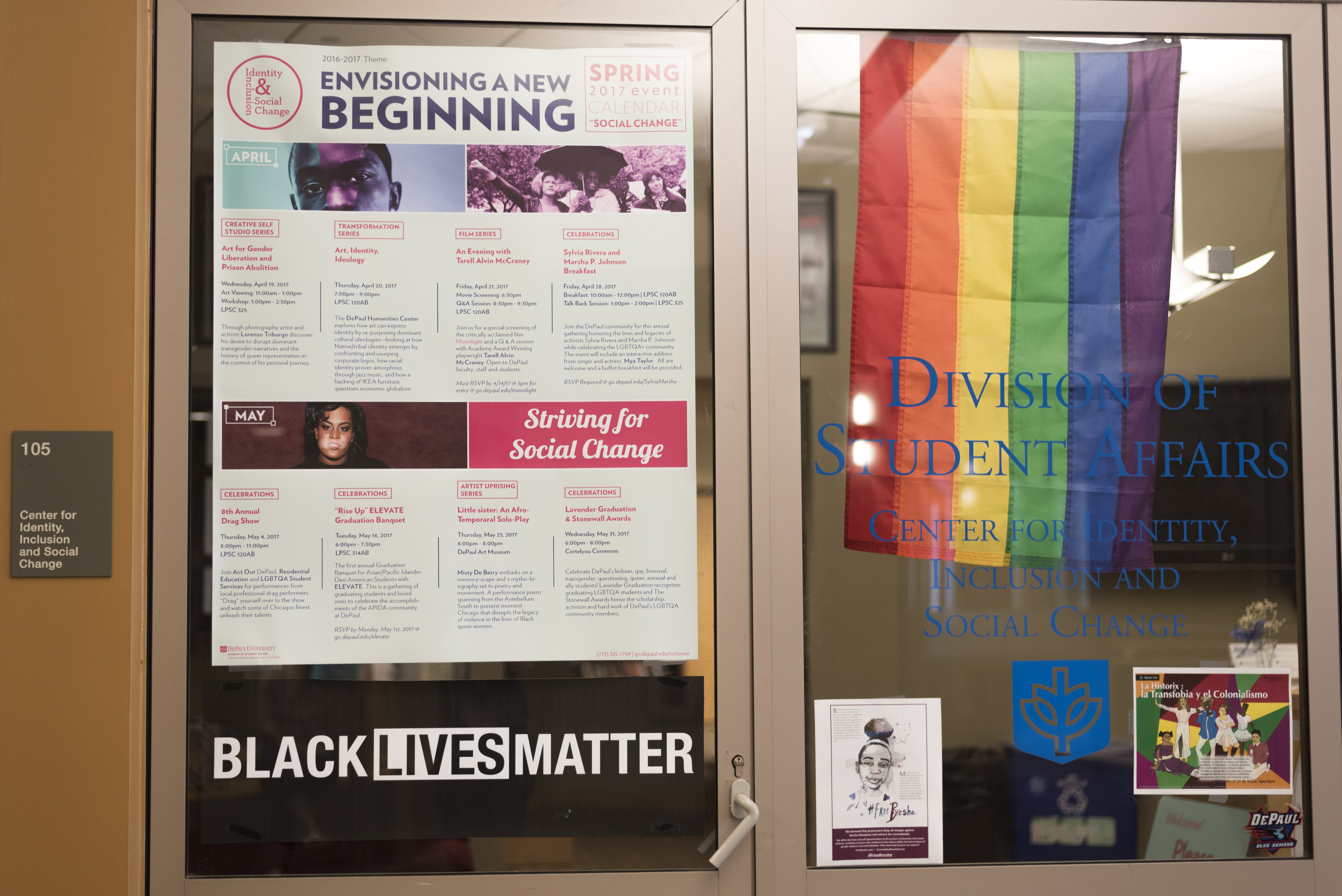
Signs promoting LGBTQ activism and #BlackLivesMatter can be found at The Center for Identity, Inclusion and Social Change. Photo courtesy of Cody Corrall.
As a university known for protest followed by progress, DePaul University will continue to explore its options this coming academic year. In 2020, three years after the implementation of this new model, Student Affairs will review progress to determine whether it will be continued, adjusted, or replaced with another model that serves student needs more effectively.
In the future, Student Affairs hopes to provide biweekly updates to the university community in regards to staffing, programming and space for the new centers as soon as these decisions are made, according to Tyler. There are plans to make these same updates available on the Multicultural Student Success website, so that community members who do not receive emails can still stay updated.
“There has to be a way to meet with students, to get our finger on the pulse of what students are looking for, what students need. And I think town halls could be a part of that,” Tyler said. “So I think it goes without saying, engaging students, and the widest range of students, and if it’s through the town hall, by all means, let’s have town hall meetings.”
Related Stories:
One Year Later: What I Learned From Reporting on the “Front and Center” Series
One Year Later, Students Weigh In On New Cultural and Resource Centers
Sustaining Dialogue: Marginalized Student Resources on Campus


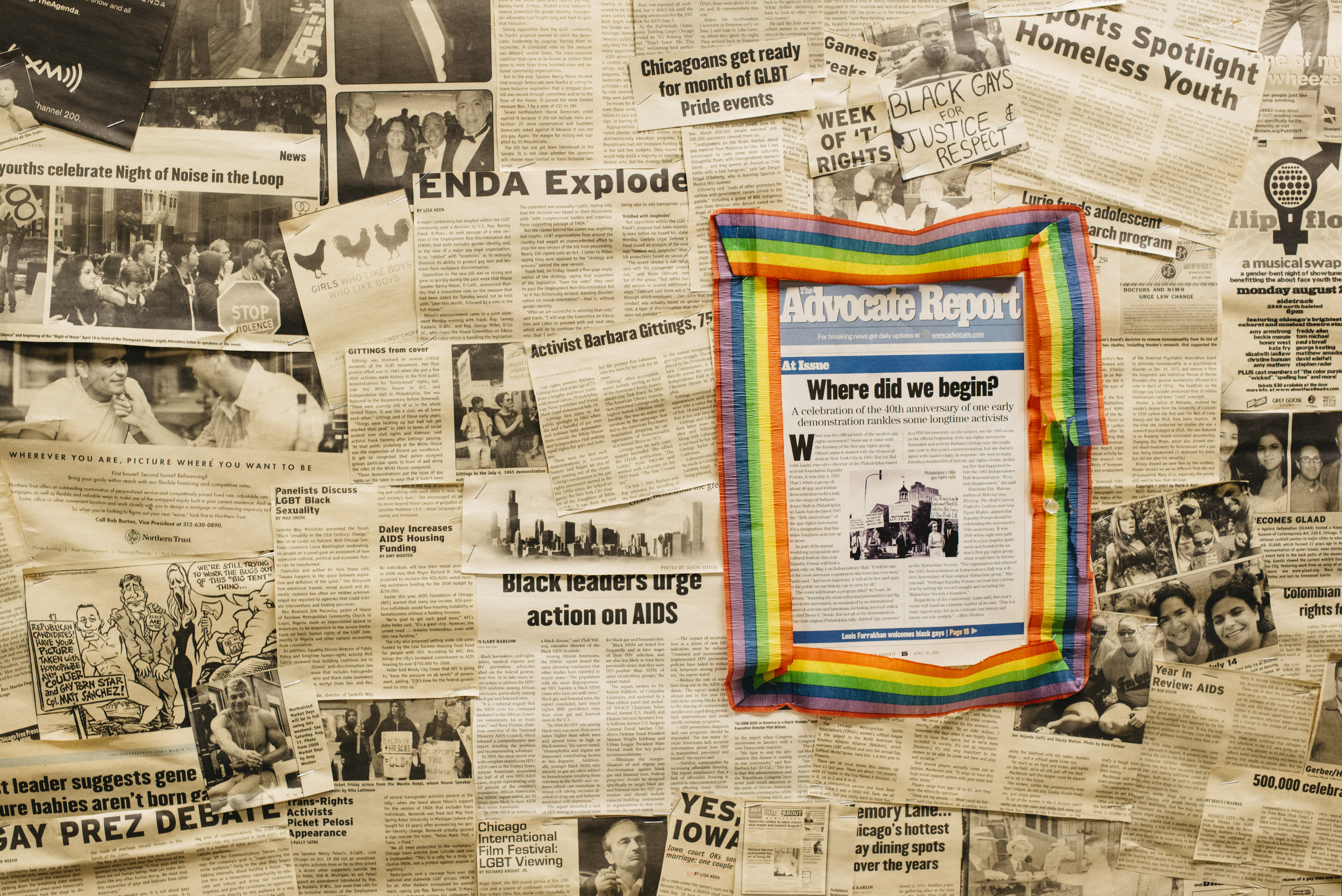

Tips on how to publish a novel on my smartphone? | kuttanadantourism
12 October
[…] you create sold you’ll acquire reviews that were unwanted and fewer Front and Center buys down the street. You have the capability to detect a variety of kinds of books sooner when you […]
One Year Later, Students Weigh In On New Cultural and Resource Centers – Fourteen East
8 November
[…] centers took the place of the former Center for Identity, Inclusion and Social Change, which was shut down in August 2017 without an immediate replacement. Often referred to just as The Center, its closing faced […]
‘The Era of New Centers’ – Fourteen East
8 November
[…] Inclusion and Social Change. The intersectional, social justice education center on campus shut down in August, with nothing to replace it but the promise of future centers — until […]
Sustaining Dialogue: Marginalized Student Resources on Campus – Fourteen East
8 November
[…] spaces for Black, Latinx, LGBTQA and (most reccently) Asian/Pacific Islander students, come with a recent history of tension and controversy between students and administration. The new centers take the place of DePaul’s former Center for […]
7 Things We Learned From Our #DePaulPublicNewsroom About Student Media and DePaul University – Fourteen East
9 November
[…] given naming rights to the arena DePaul helped finance. 14 East also reported on a story about the controversial closing of the Center for Identity, Inclusion and Social Change in […]
Precisely what is an excellent thesis statement for an essay about autism?
28 March
[…] in a position to cope with your dissertation by yourself, improved rely on real academic Front and Center gurus! You may try to compose your dissertation or thesis and also battle with something new and […]